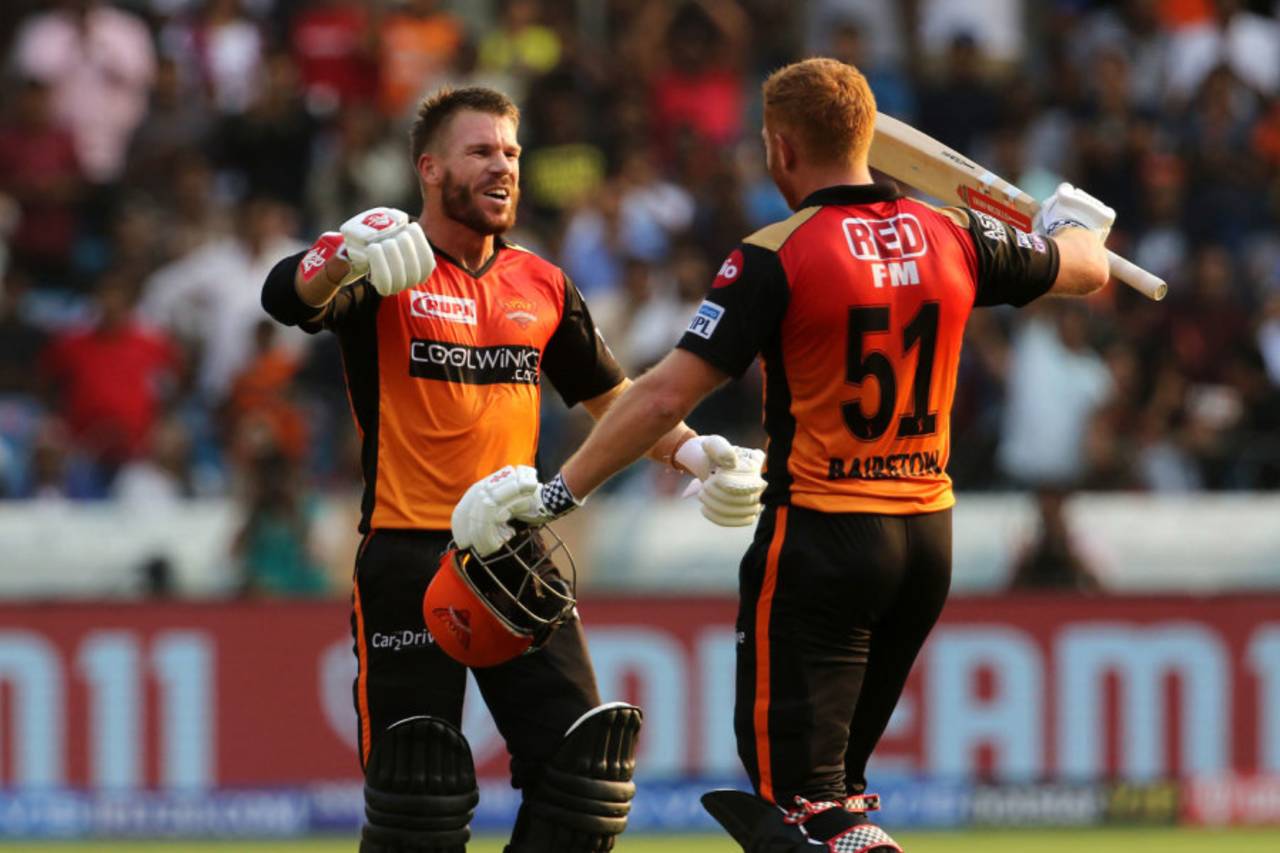What is the highest opening partnership in IPL history?
Also: which Pakistan player was nicknamed the "Peshawar Rickshaw"?

David Warner and Jonny Bairstow put on 185 for the first wicket for Sunrisers Hyderabad in the 2019 IPL, the record • BCCI
Ken Barrington, the bulwark of England's batting in the 1960s, averaged 58.67 in his 82 Test matches, against 45.63 in all first-class cricket, a difference of 13.04. That's the record for anyone who played more than 20 Tests. The overall figures include Tests, of course; if you remove those for Barrington he averaged 43.01 in his other first-class games.
That big stand between Gaikwad and Conway in Pune last week was actually the fourth-highest opening partnership in the IPL, although it's only three short of the record, 185 by Jonny Bairstow and David Warner for Sunrisers against Royal Challengers Bangalore in Hyderabad in 2019.
Kent's Zimbabwe-born seamer Nathan Gilchrist endured a horror stretch in April, bagging pairs against Hampshire, Lancashire and Yorkshire. He was the 12th man to be dismissed for six successive ducks in first-class cricket: none of them made it seven. The list includes the recent county seamer Charlie Shreck (2015) and Sri Lankan Test paceman Nuwan Pradeep (2017-18 to 2018-19). Gilchrist was left out of Kent's next game, against the Sri Lankan development team, so we will all have to wait until he is chosen again to see if he can avoid making history.

You're usually on safe ground if you mention Don Bradman and highest batting averages in the same breath - and this is no exception. Bradman played 52 Tests, and batted at No. 3 in 40 of them - and averaged 103.63 there, including 5078 runs and 20 of his eventual 29 Test centuries. He had 56 innings at No. 3: the only other person with a three-figure average from there, apart from a handful who batted only once or twice, is the New Zealander Scott Styris, with exactly 100 from five innings, two of them not-out. If you consider only those with ten or more innings at No. 3, Bradman is more than 26 runs clear of the next man, England's Ken Barrington, who averaged 77.23 - he made 2626 runs in 40 innings.
The man who was saddled with this rather unflattering nickname for a while was Umar Gul, a very useful seamer from Peshawar who ended up with over 400 international wickets. The name was a not very subtle reminder that he wasn't as fast as Shoaib Akhtar, or Waqar Younis - but it hid the fact that he was a very canny operator, who twice took 5 for 6 in T20Is, against New Zealand and South Africa. Looking online I spotted that he was also known as "The Gul-dozer", which I suspect he might have preferred!
"You're right that several reports give Hanif Mohammad 24 fours in his 337 in Bridgetown in 1957-58. However, the old England scorer Geoffrey Saulez examined the scorebook for this Test while in Barbados during the 1970s, and came up with different numbers. He reported 26 fours, 16 threes, 40 twos and 105 singles, which adds up. That would bring Hanif's non-boundaries down to 233 runs. It is conceivable that he hit one or more all-run fours, but such shots are rare in the West Indies (about 0.25% of fours in the modern Test game). I don't recall reading about any all-run fours in that innings. Sadly, that Bridgetown scorebook is now lost.
Steven Lynch is the editor of the updated edition of Wisden on the Ashes